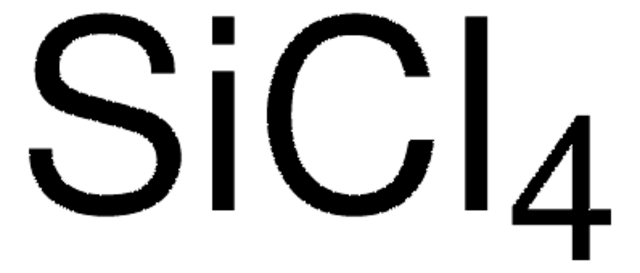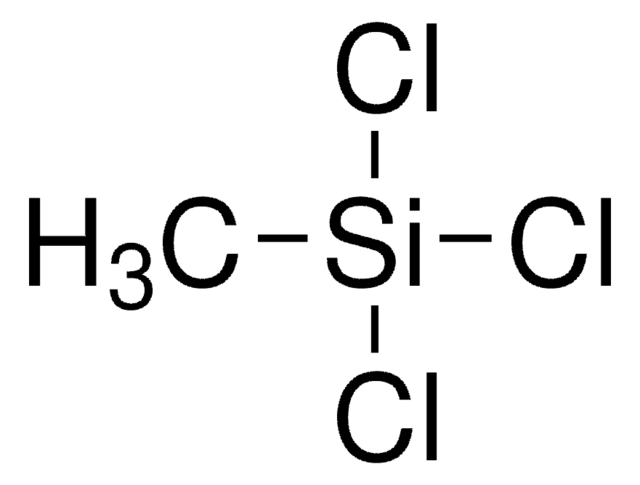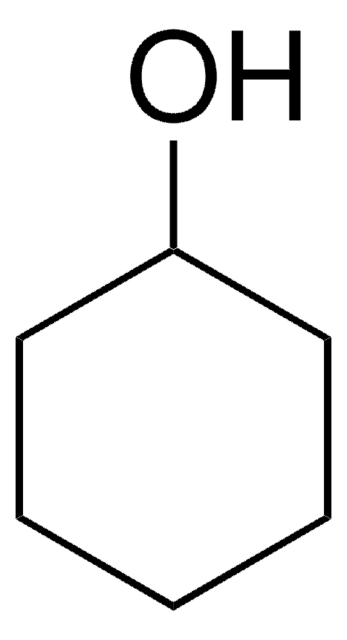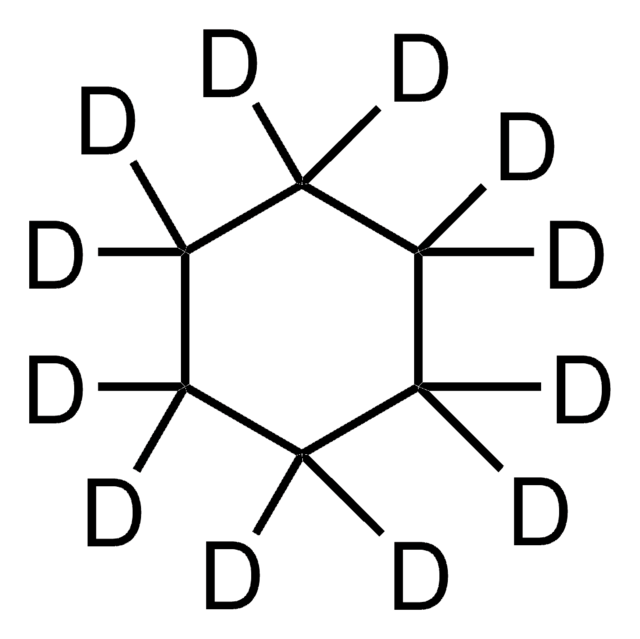215120
Silicon tetrachloride
99%
Synonyme(s) :
STC, Tetrachlorosilane
About This Item
Produits recommandés
Densité de vapeur
5.86 (vs air)
Niveau de qualité
Pression de vapeur
420 mmHg ( 37.7 °C)
Essai
99%
Forme
liquid
Pertinence de la réaction
core: silicon
pb
57.6 °C (lit.)
Pf
−70 °C (lit.)
Densité
1.483 g/mL at 25 °C (lit.)
Chaîne SMILES
Cl[Si](Cl)(Cl)Cl
InChI
1S/Cl4Si/c1-5(2,3)4
Clé InChI
FDNAPBUWERUEDA-UHFFFAOYSA-N
Vous recherchez des produits similaires ? Visite Guide de comparaison des produits
Catégories apparentées
Description générale
Application
- in the preparation of high purity silicon, high purity silicon derived from silicon tetrachloride may find major applications in the semiconductors industry and in photovoltaic cells.
- to dealuminate zeolite, mordenite.
- as a coupling agent for the synthesis of amine from carboxylic acid and an amide.
- in the synthesis of nanosilica.
Conditionnement
Mention d'avertissement
Danger
Mentions de danger
Classification des risques
Acute Tox. 3 Inhalation - Acute Tox. 3 Oral - Eye Dam. 1 - Skin Corr. 1A - STOT SE 3
Organes cibles
Respiratory system
Risques supp
Code de la classe de stockage
6.1D - Non-combustible acute toxic Cat.3 / toxic hazardous materials or hazardous materials causing chronic effects
Classe de danger pour l'eau (WGK)
WGK 1
Point d'éclair (°F)
Not applicable
Point d'éclair (°C)
Not applicable
Équipement de protection individuelle
Faceshields, Gloves, Goggles
Faites votre choix parmi les versions les plus récentes :
Déjà en possession de ce produit ?
Retrouvez la documentation relative aux produits que vous avez récemment achetés dans la Bibliothèque de documents.
Articles
atomic layer deposition (ALD), microelectronics, Mo:Al2O3 films, nanocomposite coating, photovoltaics, semiconductor devices, W:Al2O3 films, composite films, layer-by-layer
Spin-based electronic (spintronic) devices offer significant improvement to the limits of conventional charge-based memory and logic devices which suffer from high power usage, leakage current, performance saturation, and device complexity.
Hybrid organic-inorganic sol-gel materials containing silica were first called “ORMOSILs” in 1984.
The properties of many devices are limited by the intrinsic properties of the materials that compose them.
Global Trade Item Number
| Référence | GTIN |
|---|---|
| 215120-200L | |
| 215120-1KG | 4061838773432 |
| 215120-100G | 4061838773425 |
Notre équipe de scientifiques dispose d'une expérience dans tous les secteurs de la recherche, notamment en sciences de la vie, science des matériaux, synthèse chimique, chromatographie, analyse et dans de nombreux autres domaines..
Contacter notre Service technique







